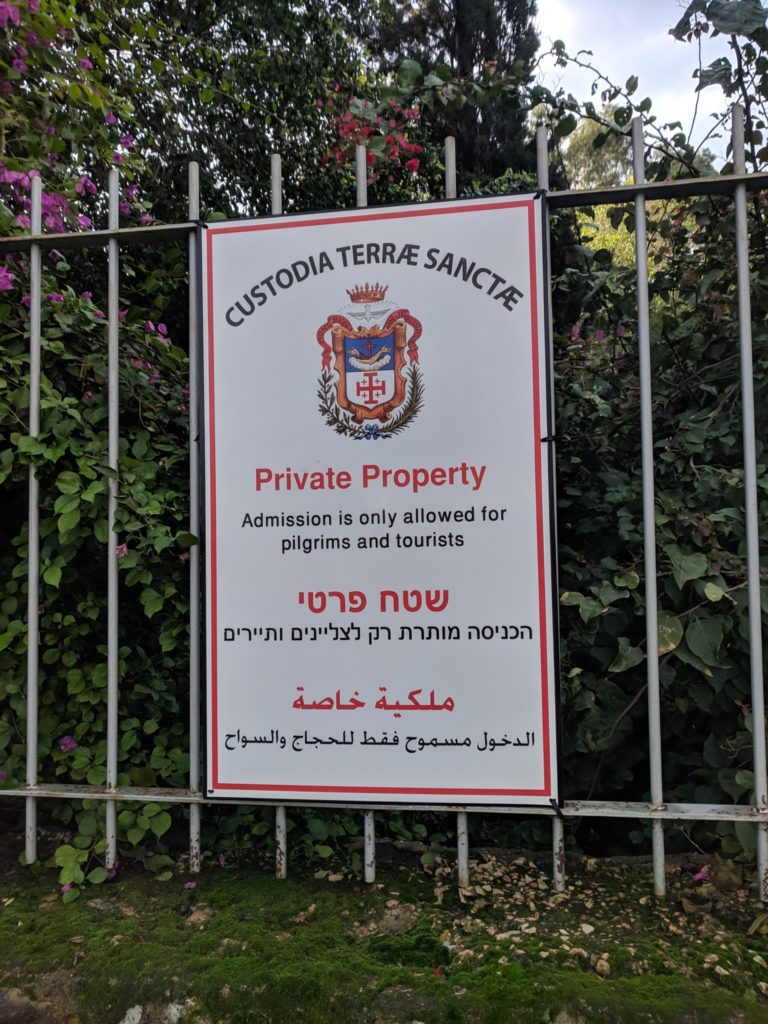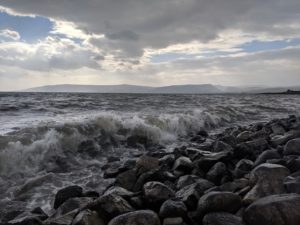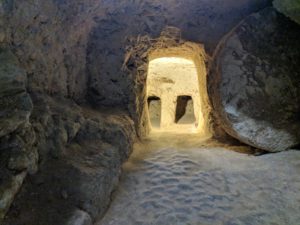 Going to various Holy Sites, we’ve seen signs such as the one on the right: “Admission is only allowed for pilgrims or tourists.” One of our brothers thoughtfully pointed out the distinction between the two – a pilgrim is not the same as a tourist. This has become somewhat painfully obvious as we’ve been travelling – some people we will encounter at various places are seemingly there to take a selfie and move on, or are there only for secular reasons.
Going to various Holy Sites, we’ve seen signs such as the one on the right: “Admission is only allowed for pilgrims or tourists.” One of our brothers thoughtfully pointed out the distinction between the two – a pilgrim is not the same as a tourist. This has become somewhat painfully obvious as we’ve been travelling – some people we will encounter at various places are seemingly there to take a selfie and move on, or are there only for secular reasons.
While I think all of us seminarians and Fr. Taphorn would say we’re certainly not here as tourists, a tourist mindset can sometimes creep in. We have to be able to keep in check the desire to say “wow, that’s cool,” take a photo – and do nothing beyond that. When visiting so many sites, the information can begin to become overwhelming and we forget our purpose: walking where Jesus walked, not to satisfy historical curiosity or to get that perfect social media post, but to inspire devotion and to make the faith even more alive for us.
A point where in recent days a number of us took especially were spiritually inspired was on the Sea of Galilee. Below are the ruins of a Byzantine-era church in the seaside town of Capernaum, the hometown of Peter and many other of the apostles. The age of the ruins, octogonal style, and other things point to this being the place of St. Peter’s house. You can even see the remnant of the house walls underneath the Byzantine structure.

Our guide on the trip, Farah, has pointed out to us at many sites the octogonal structure of Byzantine ruins. The meaning of the octogon, he says, is to point out that “this is the place.” When the the Byzantine structures were built, they built octogonal churches when they knew with near-certainty that the place where they were building was the accurate place.

Praying at the exact place of so many Biblical events was moving for many of us, and many of us were especially moved praying on the shores of the Sea of Galilee. Hearing the waves crash on the shores where Jesus called Peter, Andrew, James, and John caused us to reflect on God’s own call in our lives. With diaconal ordination approaching soon, I found my own reflection being on the call which I heard so many years ago and have heard repeated throughout the years which will hopefully be soon affirmed by the Church as she calls my classmates and me to the altar.

A surprise that came to us as we were about to leave Nazareth was a little-known archaeological site just a short ways away from the Basilica of the Annunciation – and just a few feet under where we were staying. We were welcomed by the hospitality of the Sisters of Nazareth during our stay in the town, and under their guest house are the ruins of a house and tomb which are the house of the Holy Family and the tomb of Joseph. A number of things point to this – Byzantine and crusader ruins on the site, which would not have been there had the site not been important – but the sister giving us the tour reminded us of an important principle that applies to all the sites we see. It’s not necessarily about whether the site we saw is the 100% exact historical site that it is claimed to be. It’s about whether the site helps us grow closer to Christ. Whether the ruins we saw are the house of the Holy Family or not, the ruins allow us to picture what life in the Holy Household would have been like – imagery that helps us in our prayer and helps us to come to picture the life of Christ even more vividly. In the end, with all the places we go and sires we see, what matters is that we grown closer in friendship with Christ. That will be the determining factor in whether we came as tourists – or as pilgrims.
-Paul Hedman
